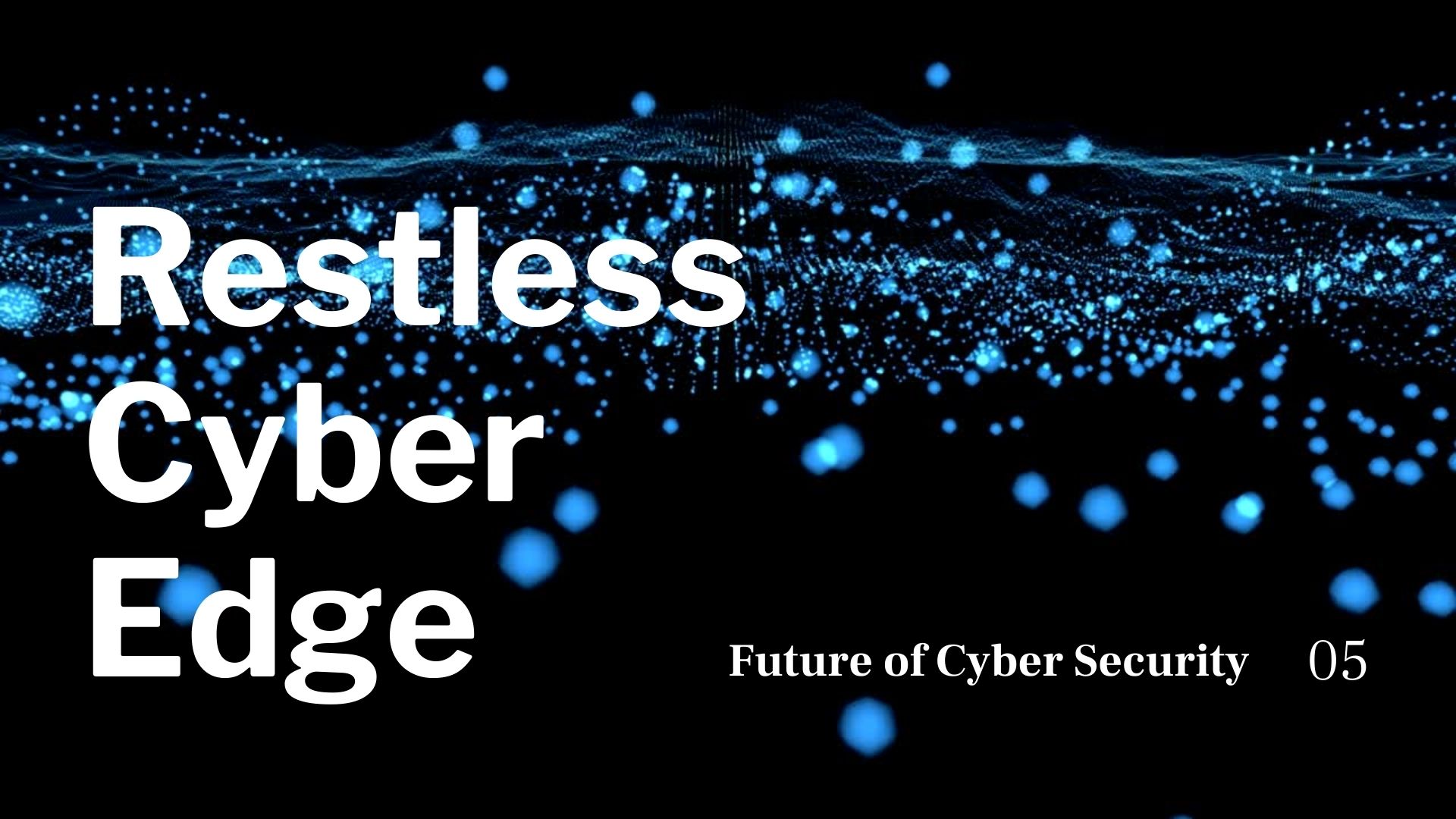How Voice Technologies Are Redefining Cybersecurity
December 13, 2024, 14 min read
In an era of rapidly evolving digital landscapes, the intersection of voice technologies and cybersecurity is becoming increasingly prominent. As organizations and individuals seek more robust and user-friendly security measures, voice-based solutions are emerging as a game-changing force in the fight against cyber threats. This innovative approach is not only enhancing security protocols but also revolutionizing how we interact with our digital environments. The integration of voice-based systems into cybersecurity frameworks represents a paradigm shift in our approach to digital protection. These technologies offer a unique blend of convenience and security, addressing the longstanding challenge of balancing user experience with robust safeguards.
The adoption of voice technologies in cybersecurity is driven by the growing need for more intuitive and harder-to-breach security measures. Traditional methods such as passwords and PINs, while still widely used, are increasingly vulnerable to sophisticated attacks. Voice-based solutions provide a natural and frictionless way to verify identity, leveraging the unique characteristics of an individual’s voice to create a secure authentication process. This shift towards biometric security measures marks a significant step forward in the ongoing battle against cyber threats, offering a level of personalization and security that was previously unattainable.
As these technologies continue to evolve, they promise to reshape the cybersecurity landscape, offering new possibilities for securing everything from personal devices to critical infrastructure. The potential applications are vast, ranging from secure financial transactions to access control in high-security environments. By harnessing the power of voice technologies, organizations can create more resilient security ecosystems that are better equipped to meet the challenges of an increasingly digital world. Time to explore applications, benefits, and challenges shaping the future of digital security.
The Rise of Voice Recognition in Cybersecurity
Voice recognition technology has made significant strides in recent years, propelled by advancements in artificial intelligence and machine learning. These improvements have positioned voice technologies as a formidable tool in the cybersecurity arsenal. By leveraging unique vocal characteristics, these systems offer a level of personalization and security that traditional methods struggle to match.
The integration of voice recognition in cybersecurity marks a paradigm shift in how we approach digital protection. Unlike conventional security measures that rely on what a user knows (passwords) or possesses (tokens), voice recognition taps into who a user is, offering a more intrinsic and difficult-to-replicate form of authentication. This biometric approach has gained traction due to its ability to provide a seamless user experience while maintaining robust security protocols.
As voice technologies continue to evolve, their application in cybersecurity is expanding beyond simple authentication. Advanced systems are now capable of detecting emotional states, stress levels, and even potential deception in a speaker’s voice, adding layers of contextual security. Moreover, the continuous nature of voice interaction allows for ongoing authentication throughout a session, significantly reducing the risk of unauthorized access after initial verification.
The rise of voice recognition in this field is also driving innovation in related areas, such as natural language processing and acoustic analysis. These advancements are enabling more sophisticated threat detection capabilities, allowing security systems to identify and respond to potential breaches in real-time. As organizations increasingly recognize the potential of voice-based security solutions, investment in research and development is accelerating, promising even more sophisticated and effective applications in the near future.
Understanding the Mechanics of Voice Biometrics
At the heart of voice-based cybersecurity lies the science of biometrics. Voice biometrics systems create unique voiceprints by analyzing various aspects of an individual’s speech, including:
- Pitch and tone
- Speech patterns and rhythm
- Vocal tract characteristics
These systems employ sophisticated algorithms and AI-driven analysis to authenticate users with a high degree of accuracy. The integration of Natural Language Processing (NLP) and acoustic modeling further enhances the capability of voice technologies in understanding and verifying user identities.
The process of creating a voiceprint begins with the enrollment phase, where a user’s voice sample is captured and analyzed. This initial sample serves as the baseline for future comparisons. During this analysis, the system breaks down the speech into its fundamental components, examining frequencies, formants, and spectral features that are unique to each individual’s vocal apparatus.
Advanced voice biometric systems also consider dynamic features of speech, such as the rate of speech, accent, and even subtle nuances in pronunciation. These elements contribute to creating a comprehensive voice profile that is incredibly difficult to replicate. The use of machine learning algorithms allows these systems to continuously refine and update voice profiles, adapting to slight changes in a user’s voice over time, such as those caused by aging or temporary illnesses.
One of the key strengths of voice biometrics in cybersecurity is its ability to perform both text-dependent and text-independent authentication. Text-dependent systems require users to speak a specific phrase, adding an extra layer of security, while text-independent systems can verify identity based on natural speech, offering greater flexibility and user convenience.
The robustness of voice biometric systems is further enhanced by liveness detection features, which are designed to prevent spoofing attempts using recorded voices or synthetic speech. These anti-spoofing measures analyze subtle characteristics of live speech that are difficult to replicate, such as micro-fluctuations in pitch and the presence of background noise consistent with the user’s environment.
Applications Across Industries
The versatility of voice technologies in cybersecurity is evident across various sectors, revolutionizing how industries approach security and user authentication. This technological advancement is not limited to a single field but is making significant impacts across multiple domains, each with its unique implementation and benefits.
- Banking: Financial institutions are implementing voice authentication to prevent fraud and secure transactions, offering customers a seamless and secure way to access their accounts. This technology allows banks to verify a customer’s identity during phone calls or mobile app interactions, significantly reducing the risk of unauthorized access and fraudulent activities. Voice recognition systems can detect nuances in speech patterns that are nearly impossible to replicate, providing an additional layer of security beyond traditional PINs or passwords.
- Healthcare: Voice-controlled access to patient records ensures data privacy while enabling hands-free operations in sterile environments. In hospitals and clinics, voice authentication allows medical professionals to access sensitive patient information without touching keyboards or screens, maintaining a sterile environment crucial in medical settings. This technology also enhances patient privacy by ensuring that only authorized personnel can access medical records through voice commands, reducing the risk of data breaches.
- Smart Devices: IoT devices are increasingly incorporating voice recognition as a primary security measure, allowing users to control and secure their smart homes through voice commands. From locking doors to arming security systems, voice technology provides a convenient and secure method of managing smart home devices. This application extends to personal assistants and smart speakers, where voice technologies not only facilitate ease of use but also serve as a frontline defense against unauthorized access to personal information and connected devices.
The adoption of voice technologies in these sectors demonstrates their potential to enhance cybersecurity measures while improving user experience. In retail, voice authentication is being used to secure customer accounts and facilitate voice-based purchases, adding an extra layer of security to e-commerce transactions. Government agencies are exploring voice biometrics for secure access to sensitive information and facilities, leveraging the unique characteristics of individual voices to verify identities with high accuracy. As these technologies continue to evolve, their applications in cybersecurity are expected to expand, offering innovative solutions to complex security challenges across even more industries.
Enhancing Multi-Factor Authentication
Voice technologies are playing a crucial role in strengthening multi-factor authentication systems. By adding voice verification as an additional layer of security, organizations can significantly reduce the risk of unauthorized access. This approach combines something the user knows (like a password) with something they are (their voice), creating a more robust security framework. The integration of voice recognition into multi-factor authentication represents a significant leap forward in cybersecurity, offering a unique blend of convenience and enhanced protection.
Voice-based multi-factor authentication systems work by analyzing distinctive vocal characteristics such as pitch, tone, and speech patterns. These biometric markers are nearly impossible to replicate, making voice verification an extremely secure method of authentication. Moreover, the use of voice technologies in multi-factor authentication addresses some of the limitations of traditional methods. For instance, it eliminates the need for users to remember complex passwords or carry additional authentication devices, which can be lost or stolen.
The adaptability of voice-based authentication also allows for continuous verification throughout a user session, rather than just at the point of initial access. This dynamic approach to security ensures that even if an unauthorized user manages to bypass the initial authentication, they can be detected and blocked as soon as they attempt to use voice commands or interactions. As cybersecurity threats continue to evolve, the incorporation of voice technologies in multi-factor authentication systems provides a flexible and scalable solution that can be easily updated to address new vulnerabilities and attack vectors.
The Benefits of Voice-Based Security Solutions
Incorporating voice technologies into cybersecurity strategies offers several advantages that are revolutionizing the way we approach digital security. These benefits are not only enhancing the overall security posture of organizations but also improving user experience and operational efficiency.
- Improved Accuracy: Voice biometrics can achieve higher accuracy rates compared to traditional security methods. The unique characteristics of an individual’s voice, such as pitch, tone, and speech patterns, create a complex biometric signature that is extremely difficult to replicate. This high level of accuracy significantly reduces the risk of false positives and negatives, providing a more reliable authentication method.
- Enhanced User Experience: Voice authentication is often faster and more convenient than typing passwords or PINs. Users can simply speak to verify their identity, making the process more natural and less cumbersome. This ease of use encourages higher adoption rates and reduces user frustration, particularly in scenarios where hands-free authentication is beneficial.
- Reduced Fraud: The unique nature of voiceprints makes it more challenging for attackers to impersonate legitimate users. Unlike passwords or PINs, which can be stolen or guessed, voice biometrics rely on inherent physical characteristics that are much harder to forge. This significantly reduces the risk of identity theft and fraudulent activities.
- Seamless Integration: Voice-based systems can be easily integrated into existing security infrastructures. This flexibility allows organizations to enhance their current security measures without completely overhauling their systems. Voice authentication can work in conjunction with other security methods, creating a robust, multi-layered approach to cybersecurity.
Moreover, voice technologies in security offer scalability and adaptability. As systems become more sophisticated, they can learn and adapt to changes in a user’s voice over time, maintaining accuracy even as users age or experience temporary voice changes due to illness. This dynamic nature ensures long-term viability and effectiveness of voice-based security solutions.
Additionally, voice authentication can provide an extra layer of security for remote access scenarios, which have become increasingly common in today’s digital landscape. By verifying a user’s identity through their voice, organizations can have greater confidence in granting access to sensitive information or systems, even when the user is not physically present.
Navigating Challenges and Risks
While voice technologies offer significant benefits in cybersecurity, they are not without challenges. As these technologies become more prevalent, it’s crucial to understand and address the potential risks associated with their implementation. The landscape of voice-based security is complex, with various factors that can impact its effectiveness and reliability.
- Voice Spoofing: Sophisticated attackers may attempt to mimic a user’s voice using recorded samples or synthetic speech. This technique, known as voice cloning or voice deepfakes, poses a significant threat to voice-based authentication systems. Attackers can potentially use AI-generated voice models to bypass security measures, making it essential for cybersecurity professionals to develop robust anti-spoofing mechanisms.
- Environmental Factors: Background noise or poor audio quality can affect the accuracy of voice recognition systems. Factors such as ambient sounds, multiple speakers, or varying acoustic environments can lead to false rejections or, more dangerously, false acceptances. This challenge is particularly prominent in public or industrial settings where maintaining a controlled audio environment is difficult.
- Privacy Concerns: The collection and storage of voice data raise important privacy considerations that must be addressed. Voice samples contain biometric information that, if compromised, could lead to severe privacy breaches. Organizations implementing voice technologies must ensure compliance with data protection regulations and implement stringent measures to safeguard voice data.
Addressing these challenges requires ongoing research and development in areas such as liveness detection and advanced encryption methods for voice data. Liveness detection techniques aim to distinguish between a live human voice and recorded or synthesized audio, adding an extra layer of security against spoofing attacks. Furthermore, advancements in encryption are crucial to protect voice data both in transit and at rest, ensuring that even if intercepted, the data remains unintelligible to unauthorized parties.
Another significant challenge lies in the continuous evolution of attack vectors. As voice technologies in cybersecurity become more sophisticated, so do the methods employed by malicious actors to circumvent them. This necessitates a proactive approach to security, with constant monitoring, testing, and updating of voice-based systems to stay ahead of potential threats.
The integration of voice technologies with other biometric and traditional security measures can help mitigate some of these risks. Multi-factor authentication that combines voice recognition with other forms of verification can significantly enhance security postures. However, this integration brings its own set of challenges, including increased system complexity and potential user friction.
The Future Landscape of Voice-Enabled Cybersecurity
As voice technologies continue to evolve, their role in cybersecurity is set to expand dramatically, reshaping the digital security landscape. The future of voice-enabled cybersecurity promises to be both exciting and transformative, with innovations that will enhance protection while simplifying user experiences. Emerging trends are paving the way for more sophisticated and reliable security measures that leverage the unique capabilities of voice recognition.
One of the most promising developments is AI-powered anomaly detection. Advanced artificial intelligence systems are being designed to detect even the most subtle changes in voice patterns, allowing for the identification of potential security breaches with unprecedented accuracy. These systems can analyze not just the words spoken, but also the nuances of tone, rhythm, and vocal characteristics that make each voice unique. This level of detailed analysis makes it extremely difficult for unauthorized users to bypass security measures through voice imitation or recording playback.
Edge computing integration is another crucial trend shaping the future of voice-enabled cybersecurity. By processing voice data locally on devices, rather than sending it to cloud servers, organizations can significantly enhance both the speed and security of voice authentication processes. This approach reduces latency, improves response times, and minimizes the risk of data interception during transmission. As edge computing capabilities continue to advance, we can expect to see even more powerful and efficient voice recognition systems integrated directly into a wide range of devices and applications.
Continuous authentication represents a paradigm shift in how we approach security. Rather than relying on a single point of verification at the beginning of a session, future systems will persistently verify a user’s identity throughout their interaction with a device or service. This ongoing authentication process uses voice technologies to create a constant, passive security layer that can immediately detect any changes in the user’s voice, potentially indicating a security threat. This approach not only enhances security but also improves the user experience by reducing the need for repeated manual authentications.
As these technologies mature, we can anticipate the development of even more advanced features. For instance, emotional analysis could be incorporated into voice authentication systems, adding another layer of security by detecting stress or duress in a user’s voice. Additionally, multi-modal biometric systems that combine voice recognition with other forms of biometric data, such as facial recognition or fingerprint scanning, could provide unprecedented levels of security for high-risk applications.
Strategies for Maximizing Potential
To fully leverage the power of voice technologies in cybersecurity, organizations should consider a multifaceted approach. Investing in robust, AI-driven voice recognition systems is crucial, as these advanced technologies form the backbone of effective voice-based security solutions. These systems should be capable of adapting to various accents, languages, and environmental conditions to ensure maximum efficacy.
Implementing comprehensive training programs for users and security teams is equally important. These programs should cover not only the technical aspects of using voice-based security systems but also best practices for maintaining voice hygiene and recognizing potential threats. Regular refresher courses can help keep staff up-to-date with the latest developments in voice technologies and cybersecurity.
Organizations must also commit to staying informed about the latest advancements and potential vulnerabilities in voice-based security. This involves dedicating resources to ongoing research and development, participating in industry conferences, and engaging with academic institutions at the forefront of voice technology research.
Collaboration with industry partners to establish best practices and standards is essential for creating a unified approach to voice-based cybersecurity. This collaborative effort can lead to the development of industry-wide benchmarks, security protocols, and interoperability standards that benefit all stakeholders. Additionally, organizations should consider establishing partnerships with voice technology providers to gain early access to emerging features and security enhancements.
- Investing in robust, AI-driven voice recognition systems
- Implementing comprehensive training programs for users and security teams
- Staying informed about the latest advancements and potential vulnerabilities in voice-based security
- Collaborating with industry partners to establish best practices and standards
- Conducting regular security audits and penetration testing of voice-based systems
- Developing incident response plans specific to voice technology breaches
- Encouraging a culture of continuous improvement and innovation in voice security measures
The Regulatory Landscape
As voice technologies become more prevalent in cybersecurity, the need for clear regulatory frameworks is growing. Policymakers and industry leaders must work together to establish guidelines that protect user privacy while fostering innovation. This includes addressing concerns around data storage, consent for voice sampling, and the ethical use of voice data. The rapid advancement of voice technologies in cybersecurity has outpaced existing regulations, creating a complex landscape for organizations to navigate.
Key areas requiring regulatory attention include the collection and retention of voice data, cross-border data transfer regulations, and the establishment of standards for voice recognition accuracy and security. Additionally, regulators must consider the implications of voice data in legal proceedings and the potential for bias in voice recognition systems. The General Data Protection Regulation (GDPR) in Europe has set a precedent for data protection, but specific guidelines for voice data are still evolving.
Industry self-regulation is also playing a crucial role, with many companies adopting voluntary standards and best practices. However, a more comprehensive and globally coordinated approach is necessary to ensure consistency and protect users across different jurisdictions. As voice technologies continue to redefine cybersecurity, the regulatory landscape must adapt to balance innovation with the fundamental right to privacy and data protection.
Embracing Voice-Enabled Security
The integration of voice technologies into cybersecurity strategies represents a significant shift in how we approach digital protection. By offering enhanced security, improved user experience, and the potential for continuous authentication, voice-based solutions are set to play a central role in the future of cybersecurity. As these technologies continue to mature, their ability to safeguard our digital lives will only grow stronger, ushering in a new era of secure, voice-enabled interactions in our increasingly connected world.
Embracing voice-enabled security means recognizing the transformative potential of these technologies across various sectors. From financial institutions to healthcare providers, organizations are increasingly adopting voice authentication systems to bolster their security measures. This shift is not merely about implementing new technology; it’s about fundamentally rethinking how we verify identities and protect sensitive information in the digital age.
The adoption of voice technologies in cybersecurity also opens up new possibilities for accessibility and inclusivity. For individuals with physical disabilities or those who struggle with traditional authentication methods, voice-based security offers a more user-friendly alternative. This inclusivity extends to elderly populations who may find voice commands more intuitive than complex password systems.
Moreover, as we move towards a more interconnected world with the Internet of Things (IoT), voice-enabled security becomes increasingly relevant. Smart homes, connected vehicles, and wearable devices can all benefit from the seamless integration of voice authentication, providing a unified and secure ecosystem for users. This holistic approach to security not only enhances protection but also streamlines the user experience across multiple devices and platforms.
To fully embrace voice-enabled security, organizations and individuals must remain vigilant and adaptable. This means staying informed about the latest advancements in voice technologies, understanding potential vulnerabilities, and continuously updating security protocols. By doing so, we can harness the full potential of voice-based solutions to create a more secure and user-friendly digital environment for all.




























